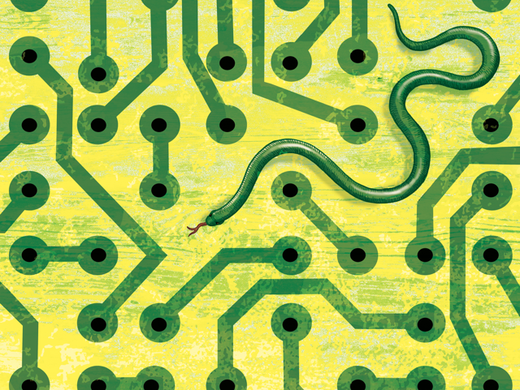Signs of the acceleration of the pace of technological change are everywhere, including the signals of profound new transformations of society and the economy coming from the currency of terms such as the “metaverse” and “Web3.” While the reality (or perhaps better, the virtual reality) of these concepts has yet to snap into sharp definition, the digital transformation continues apace, and indeed at an accelerated pace, driven by the economic exigencies generated by the COVID-19 pandemic.
These technological changes have profound implications for the conditions of competition facing countries worldwide, including advanced countries that are on the periphery of these developments (such as Canada) and developing countries alike. Moreover, as these new technological possibilities are rolled out, not only are countries’ prospects for broad-based prosperity materially affected, but they will need to rethink how they even measure prosperity.
At this stage, we can only imagine what the metaverse will actually be and how significant it will be. The same goes for a blockchain-based Web3 that aims to disintermediate firms that have established themselves as trusted intermediaries. Considerable investments are being made by firms in virtual and augmented reality technologies and decentralized financing and payments systems (DeFi) that underpin the immersive digital worlds now being created, such as Baidu’s Xirang and Meta/Facebook’s Horizon World. In these worlds, people will be able to interact socially and commercially through avatars, including creating, buying and selling digital assets.
Speculations as to where this is going are still mostly in the realm of science fiction (ranging from dystopias like The Matrix to optimistic possibilities like Black Mirror’s “San Junipero”) — and through speculative investments in non-fungible tokens that may possibly lead to modern versions of the tulip bubble. Yet we know that we live in an age of accelerated technological change that cumulates to profound transformation — investors are already plowing significant sums of money into brain-computer interfaces, for example (namely, Elon Musk’s Neuralink, which raised US$205 million in venture capital funding). Accordingly, it is important to think through what this means for economies.
The Journey to the Cloud
To provide some perspective, the first mention of the concept of the “cloud” was in 1996; today, a quarter of a century later, the cloud is part of the backbone infrastructure of the digital economy, enabling business models such as “platform as a service” (PaaS), “software as a service” (SaaS) and “infrastructure as a service” (IaaS) that provide small firms affordable access to computing power and technology that would otherwise be prohibitively expensive. (To this list, we could add “governance as a service,” or GaaS, if we think about Estonia’s model of e-business registry.)
But it took several innovations in the late 2000s to establish the technological basis for the cloud vision to be realized:
- deep learning based on stacked neural nets (2006);
- the introduction of the iPhone, which launched the mobile age (2007); and
- the application of graphics processing units to run stacked neural nets (2009).
These innovations generated the big data and machine learning capability that underpinned the emergence by 2010 of a new type of economy: the data-driven economy, which features superstar firms that operate at the global level, whose value is comprised almost entirely of intangible assets — intellectual property (IP) and data — and that provide the cloud-based platforms that serve as the new digital backbone infrastructure.
Economic development is a story about technology and firms. And because technology resides in firms, it is actually primarily a story about firms.
Change and Consequence
These innovations also powered the rapid development of artificial intelligence (AI), which is now poised to usher in yet another new economic age: that of “machine knowledge capital,” a new form of productive capital that will compete with and complement the human knowledge capital that is the foundation of the knowledge-based economy. This promises to be profoundly consequential.
One consequence is that it lifts the constraint on economic growth of services-intensive economies imposed by the “Baumol effect.” This effect arises because services depend on human capital, which does not easily scale; accordingly, the transition from the industrial age to a post-industrial age came with slowing growth. Machine knowledge capital, however, scales enormously, as it features effectively zero marginal costs to replicate.
A second consequence is that it effectively industrializes learning. In 2021, we saw the first patents issued to AI systems (in South Africa, and in Australia). Just as the industrialization of research and development through the spread of computer-aided design and manufacturing enabled by the introduction of the IBM personal computer in 1981 led to a steep rise in the pace of patenting, we can anticipate a further acceleration in the pace of innovation.
We Need New Compasses to Navigate the New ’Verse
What does this mean for economies that are on the periphery, that trail in technology or are on the wrong side of the digital divide? To get at this, we need to understand how economies develop.
Economic development is a story about technology and firms. And because technology resides in firms, it is actually primarily a story about firms. As economies grow, they diversify enormously in terms of technical capabilities and products. This means they also feature a Cambrian-like explosion in the number and types of firms. Conversely, economic underdevelopment — including the so-called middle-income trap — is associated with a lack of firms.
By the same token, an age of accelerated innovation thus features a proliferation of new firms. One indicator that we are in such an age is the number of “unicorns” — private firms valued at US$1 billion. The term unicorn was applied to these firms because they were rare. A recent count identified 943 such firms with an estimated market value of more than US$3 trillion.
We know that the size distribution of firms follows a power law, which means that below this threshold are many, many more highly valuable start-ups. From the perspective of equitable development, the question is: How many of these are outside the main hotbeds of technological development? The current answer is “too few” — whether we are talking countries on the periphery (Canada has 15 unicorns in CB Insights’ latest count, compared to the United States’ 470, far below the conventional ratio of 1:10 that defines so many aspects of Canada’s relationship with the United States) or in the developing world.
But the breakthrough potential is there: recently, the Israeli research centre StartupBlink’s annual Global Startup Ecosystem Index ranked Lagos 122nd out of 1,000 cities worldwide in terms of providing an environment conducive to digital start-ups, while the World Economic Forum listed seven African start-ups in its 2021 cohort of 100 Technology Pioneers.
Cyberspace is inherently global in nature. Economies can plug into cyberspace as consumers — obtaining free services from the internet — and as producers (which means through firms). In principle, the new digital platforms and the IaaS/SaaS/PaaS/GaaS infrastructure relieve the constraints on firm creation posed by inadequate economic infrastructure and governance in developing countries and the thinness of local firm ecosystems.
The key insight for countries is not whether they are “competitive” with the technology leaders — whatever that might mean — but whether they can provide the launching pad for start-ups to enter the global ecosystem of firms that each new economic age spawns. An expanding ecosystem accommodates new firms rather than driving them out of existence — a thriving ecosystem is all about diversity. That’s the message.
In this regard, the rise of probably the most disruptive economy in economic history — China — has been described in many ways. In my view, the critical phase was its entry into the knowledge-based economy and the data-driven economy simultaneously around 2010 — and with regard to the data-driven economy, contemporaneously with the United States. Today, China has the largest number of Global 500 firms and the second-largest number of unicorns.
The Path to the Metaverse
The path to the metaverse will be long and winding, with technological innovations as yet unknown that will structure its course and open up new niches in the evolving ecosystem of firms — countries on the periphery and in the developing world need not be excluded.
My advice to policy makers is to count firms rather than to focus on aggregate measures of output such as GDP that do not capture the value of the most important assets of our age — the intangibles of IP and data, and the firms that hold them.
This article is adapted from the original version developed for and posted by the Saint Pierre Center for International Security, Guangzhou, China. It is reposted here in modified form with permission.



